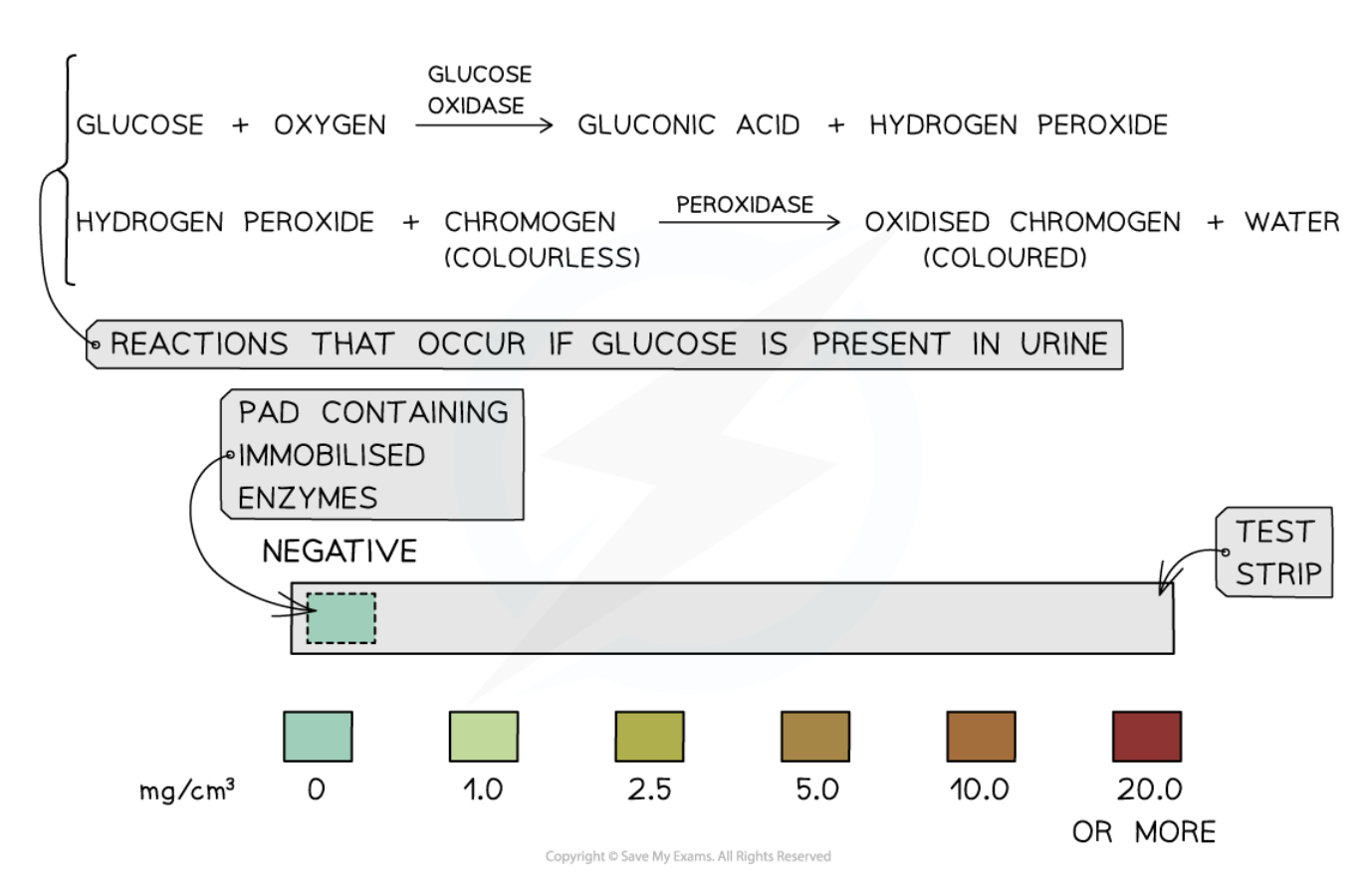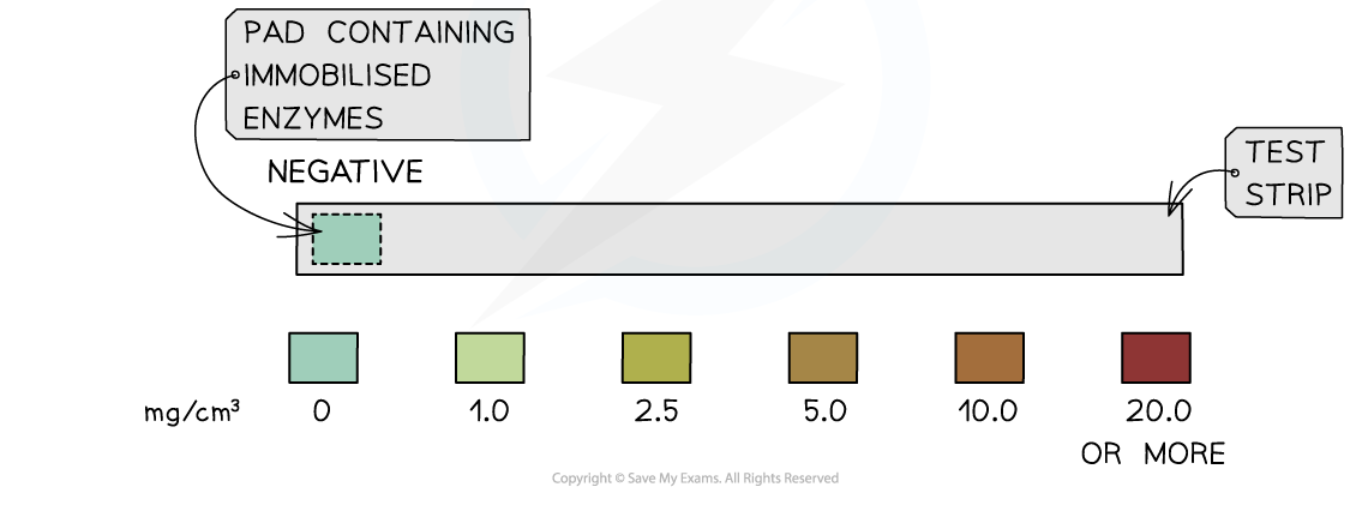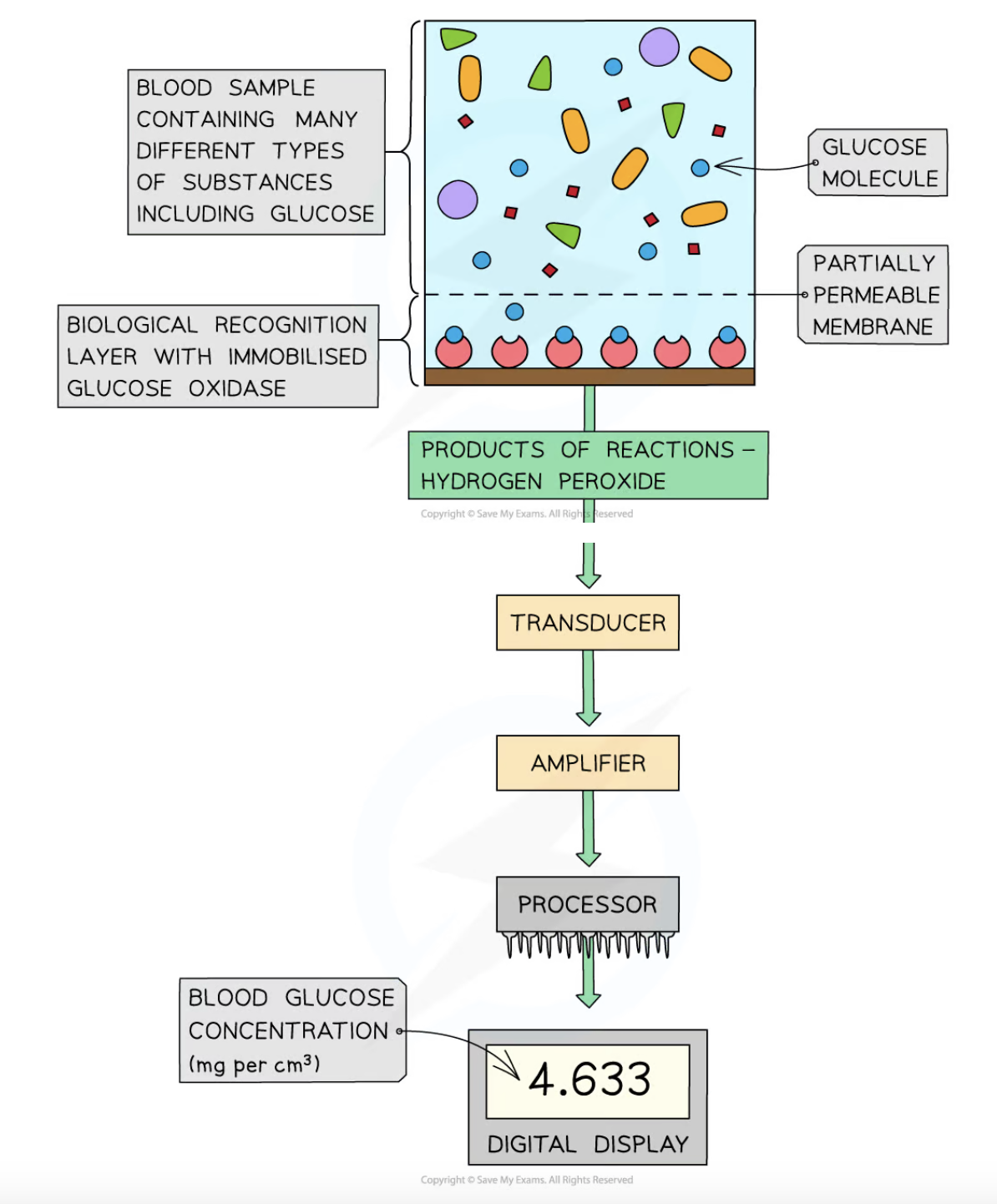(CIE A2 Biology) Test strips + biosensors
1/9
There's no tags or description
Looks like no tags are added yet.
Name | Mastery | Learn | Test | Matching | Spaced |
|---|
No study sessions yet.
10 Terms
diabetes
a type of medical condition where blood glucose concentrations become uncontrollable
how urine samples can be identified as coming from diabetics
by checking for the presence of unfiltered glucose in them
the renal threshold
the blood glucose concentration above which glucose reabsorption from the PCT filtrate becomes abnormal
test strips
contain two immobilized enzymes (glucose oxidase and peroxidase) on small pads at each of their ends so they can be immersed into urine samples for a short amount of time

how test strips can identify glucose levels in urine
firstly the glucose oxidase in them catalyzes an oxidation reaction where glucose splits into gluconic acid and hydrogen peroxide
then the peroxidase in them forms a brown compound (along with water) from the hydrogen peroxide + colorless pad-stored chemical

how higher glucose concentrations in urine affect test strip results
there’s a higher yield of the brown compound from the peroxidase-catalyzed reaction

the main shortfall of the test strip method
it can’t display results based on current blood glucose concentration levels the way biosensors do due to it only working with urine samples
biosensors
have a recognition layer impregnated w/ immobilized glucose oxidase molecules that’s covered by a partially-permeable membrane that only small blood-transported molecules can pass through

how biosensors calculate current blood glucose concentration levels
firstly glucose oxidase-catalyzed reactions occur upon contact with human blood samples to form gluconic acid + hydrogen peroxide
an electron transfer-detecting electrode then oxidizes the hydrogen peroxide at an electron flow proportional to blood sample glucose concentrations
the electron flow’s current then gets biosensor-amplified and processed to produce digital blood glucose concentration readings within seconds

what happens when solutions with non-glucose sugars get tested using test strips
glucose oxidase’s specificity leads to negative results